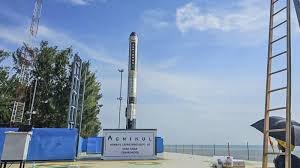History was made today as a private aerospace company successfully launched Nova 1, the world’s first fully 3D-printed rocket, into space. The rocket reached low-Earth orbit before safely deploying its small satellite payload and returning to Earth without incident.
Built almost entirely from 3D-printed components, Nova 1 represents a major technological leap forward in aerospace manufacturing. Engineers utilized cutting-edge metal 3D printing to fabricate the rocket’s engines, fuel tanks, and structural elements, dramatically reducing production times and costs. Traditional rocket manufacturing often takes several years and millions of dollars, whereas Nova 1 was built in a fraction of that time.
Company executives hailed the launch as a \"paradigm shift\" in space exploration. By simplifying complex parts into single printed pieces and minimizing material waste, 3D printing could make space launches more affordable and accessible. This would be a game-changer for satellite deployment, scientific missions, and even future plans for Mars colonization.
The successful mission also highlights the growing influence of private companies in space innovation, once the exclusive domain of national agencies like NASA or Roscosmos. The next phase of development will focus on scaling up the technology to build larger rockets capable of carrying humans and cargo deeper into space.
Analysts believe that 3D printing technology could revolutionize not just launches from Earth, but also enable in-space manufacturing—creating replacement parts or even entire spacecraft components directly in orbit, vastly reducing mission costs and risks.


















Fausta
Okay